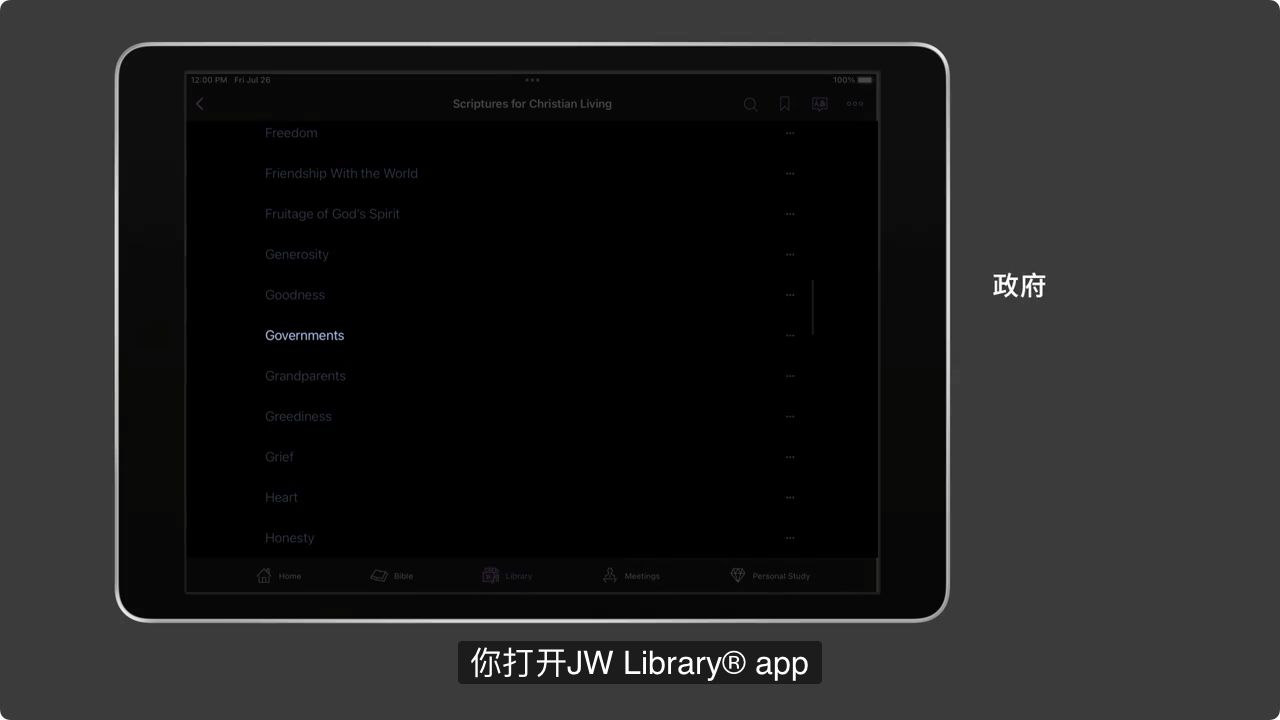fàzhǐ (fà·zhǐ hair · {(to point with) finger → [to point]} → [hair to bristle up with anger] 发指 髮指) 👈🏼 Tap/click to show/hide the “flashcard”
[Notes: Tap/click on a Pīnyīn (Pīn·yīn {Piecing Together of} · Sounds → [Pinyin] 拼音) expression to reveal its “flashcard”; tap/click on a “flashcard” or its Pīnyīn (Pīn·yīn {Piecing Together of} · Sounds → [Pinyin] 拼音) expression to hide the “flashcard”. 📖 📄 📘 icons mean 📖 Reveal All, 📄 Reveal Advanced, and 📘 Reveal None re all the “flashcards” in the heading, paragraph, etc. that they are placed at the beginning of.]
One of the publications that is now recommended to be used on Bible studies is the Yǒngyuǎn Xiǎngshòu Měihǎo de Shēngmìng—Hùdòng Shì Shèngjīng Kèchéng ((Yǒng·yuǎn Eternally · {Far (in Time)} 永远 永遠) (Xiǎng·shòu Enjoy · Receive 享受) (Měi·hǎo Beautiful · Good 美好) (de ’s 的) (Shēngmìng Life 生命)—(Hù·dòng {Each Other} · Moving → [Interactive] 互动 互動) (Shì (Type 式) (Shèng·jīng Holy · Scriptures → [Bible] 圣经 聖經) (Kè·chéng Lessons · Procedure → [Course] 课程 課程) → [Enjoy Life Forever!—An Interactive Bible Course (lff)]) (Enjoy Life Forever! (lff)) book. This week’s MEotW, “fàzhǐ (fà·zhǐ hair · {(to point with) finger → [to point]} → [hair to bristle up with anger] 发指 髮指)”, appears in lesson 13, point 5 of this book:
Religions have misrepresented God in many ways. One notorious way has been their involvement in war.
Mandarin (WOL, Pīnyīn (Pīn·yīn {Piecing Together of} · Sounds → [Pinyin] 拼音) Plus):
📖 📄 📘 Cuòwù (Cuò·wù {staggered → [erroneous]} · false 错误 錯誤) de (’s 的) zōngjiào (zōng·jiào {schools of thought} · teachings → [religions] 宗教) zài (in 在) xǔduō (xǔ·duō numbers · many 许多 許多) fāngmiàn (fāng·miàn {directions → [sides]} · faces → [aspects] 方面) lìngrén (lìng·rén {have commanded → [have caused]} · people 令人) wùjiě (wù·jiě {being mistaken} · {to untie → [to solve] → [to understand]} → [to misunderstand] 误解 誤解) Shàngdì (Shàng·dì Above’s · {Emperor → [God]} → [God] 上帝), qízhōng (qí·zhōng them · among 其中) yí (one 一) ge ([mw] 个 個/个) jiùshì (jiù·shì exactly · is 就是) cānyù ({taking part in} 参与 參與/預) zhànzhēng (zhàn·zhēng war · contending → [war] 战争 戰爭). Zhèi (these 这 這) zhǒng ({kinds of} 种 種/种) xíngwéi (xíng·wéi {walkings → [doings]} · doings → [actions] 行为 行為) lìngrén (lìng·rén {command → [cause]} · people’s 令人)‐fàzhǐ (fà·zhǐ hair · {(to point with) finger → [to point]} → [hair to bristle up with anger] 发指 髮指).
The morphemes in “fàzhǐ (fà·zhǐ hair · {(to point with) finger → [to point]} → [hair to bristle up with anger] 发指 髮指)” literally mean “hair finger”. As it often is, though, here the morpheme literally meaning “finger” is used to effectively mean “to point”. Other expressions that use this morpheme in this way include “zhǐyǐn (zhǐ·yǐn {(pointing with) finger → [pointing]} · guiding; leading 指引)” and past MEotW “zhǐnán‐zhēn ((zhǐ·nán {(points with) finger → [points]} · south 指南)‐(zhēn needle 针 針) → [compass])”.
Asian Feelings
The above translation from the Enjoy Life Forever! book is an interesting one that’s technically more evocative than necessary to directly translate the meaning of the original English passage—the English word “notorious” is made to seem a bit abstract and intellectual compared to the visceral image from “fàzhǐ (fà·zhǐ hair · {(to point with) finger → [to point]} → [hair to bristle up with anger] 发指 髮指)” of anger so strong that it causes one’s hair to bristle and stand on end.
This reminds me of how, many years ago, when some of us used to have to act out Cantonese or Mandarin dramas for the conventions, we noticed that Cantonese or Mandarin recordings were sometimes noticeably more emotional than the corresponding original English recordings that we had been using for reference. While it has been a common stereotype that Chinese people (and other Asian people too) are “inscrutable” and relatively unemotional, the truth is that the human feelings that the relatively collectivist Asian cultures tend to suppress often end up just getting compressed, like steam in a pipe, and when the pressure gets to be too much, such feelings can end up getting expressed very intensely, maybe even explosively, when they finally are expressed.
Another factor is that sometimes, Westerners finding Easterners to be unemotional is just a matter of people of different cultures expressing emotions differently. This clip from the television show Star Trek: Strange New Worlds portrays an extreme, rather humorous fictional example of this:
Jesus’ Feelings
Seeing how profit-minded individuals had profaned his Father’s temple, Jesus was so moved by righteous indignation and zeal for Jehovah’s house that he went to the point of literally flipping tables. (John 2:14–17) The Bible also tells us that when some showed that they cared more about their Sabbath traditions than about giving practical help to those in serious need, Jesus was “looking around at them with indignation, being thoroughly grieved at the insensibility of their hearts”.—Mark 3:1–5.
Considering Jesus’ example of zeal for Jehovah, perhaps it’s quite appropriate to feel righteous indignation at how the world prioritizes glorifying human Chinese culture and preserving human traditions like those involving Chinese characters, when we are tasked with the urgent and actually more important work of effectively glorifying Jehovah (as the recently added song 159 encourages us to do) and helping Mandarin-speaking ones in spiritual need.
For convenience:
The direct link for the Pīnyīn (Pīn·yīn {Piecing Together of} · Sounds → [Pinyin] 拼音) Plus resource for the Enjoy Life Forever! book is:
The short link for Chinese field language-learning links for the Enjoy Life Forever! book is:
More Pīnyīn (Pīn·yīn {Piecing Together of} · Sounds → [Pinyin] 拼音) and Pīnyīn (Pīn·yīn {Piecing Together of} · Sounds → [Pinyin] 拼音) Plus web material based on the Mandarin Enjoy Life Forever! book will be made available in the Pīnyīn (Pīn·yīn {Piecing Together of} · Sounds → [Pinyin] 拼音) Plus web resource as time allows.
